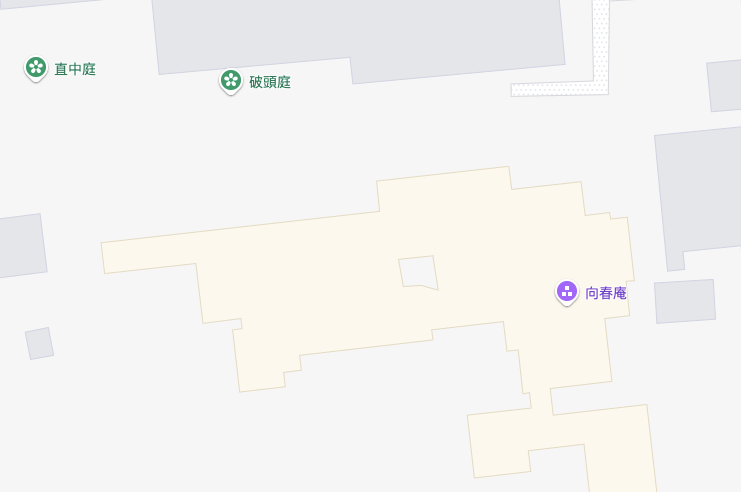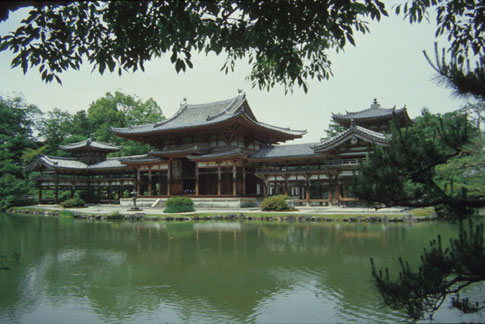
Ryogen-in, a subtemple of the Daitoku-ji complex, was constructed in 1502. Within or adjoining the abbot's residence are five gardens, three of which are included here. Choose a view point from the map or click Tour the Garden for various views of the three gardens.
Ryogen-in is a subtemple of the Daitoku-ji complex. Constructed in 1502 under the direction of Tokei Soboku, it can boast of five individual gardens connected to the abbot's residence. The most famous--probably the oldest garden of the Daitoku-ji complex--is the Ryugintei (Singing Dragon Garden), an elongated rectangle of moss and some thirty stones running along the northern flank of the hojo. Like a number of Muromachi gardens, it has been attributed to the painter Soami on very little evidence. The group of three stones in the center of the garden is thought to represent Mt. Sumeru (Shumisen in Japanese), the mountain axis of the universe according to Hindu belief, although it could also have been intended to evoke Horai, the mythical home of Daoist immortals. If one accepts the former interpretation, the other rocks may represent the eight circles of mountains and oceans that surround Mt. Sumeru in Hindu cosmology.
To the south of the hojo is the garden known as Isshidan, a modern construction designed by Katsudo to replace an ancient tree that died in 1980. Here there can be little doubt that the rock formations are intended to represent a Crane Island, a Tortoise Island, and Shumisen.
To the southeast of the hojo lies one of Japan's smallest Zen gardens, a narrow strip of raked gravel connecting two stones, one supposedly representing the syllable "a," the other "un," and thus alluding to complimentary opposites (inhaling and exhaling, male and female, heaven and earth, etc.).

